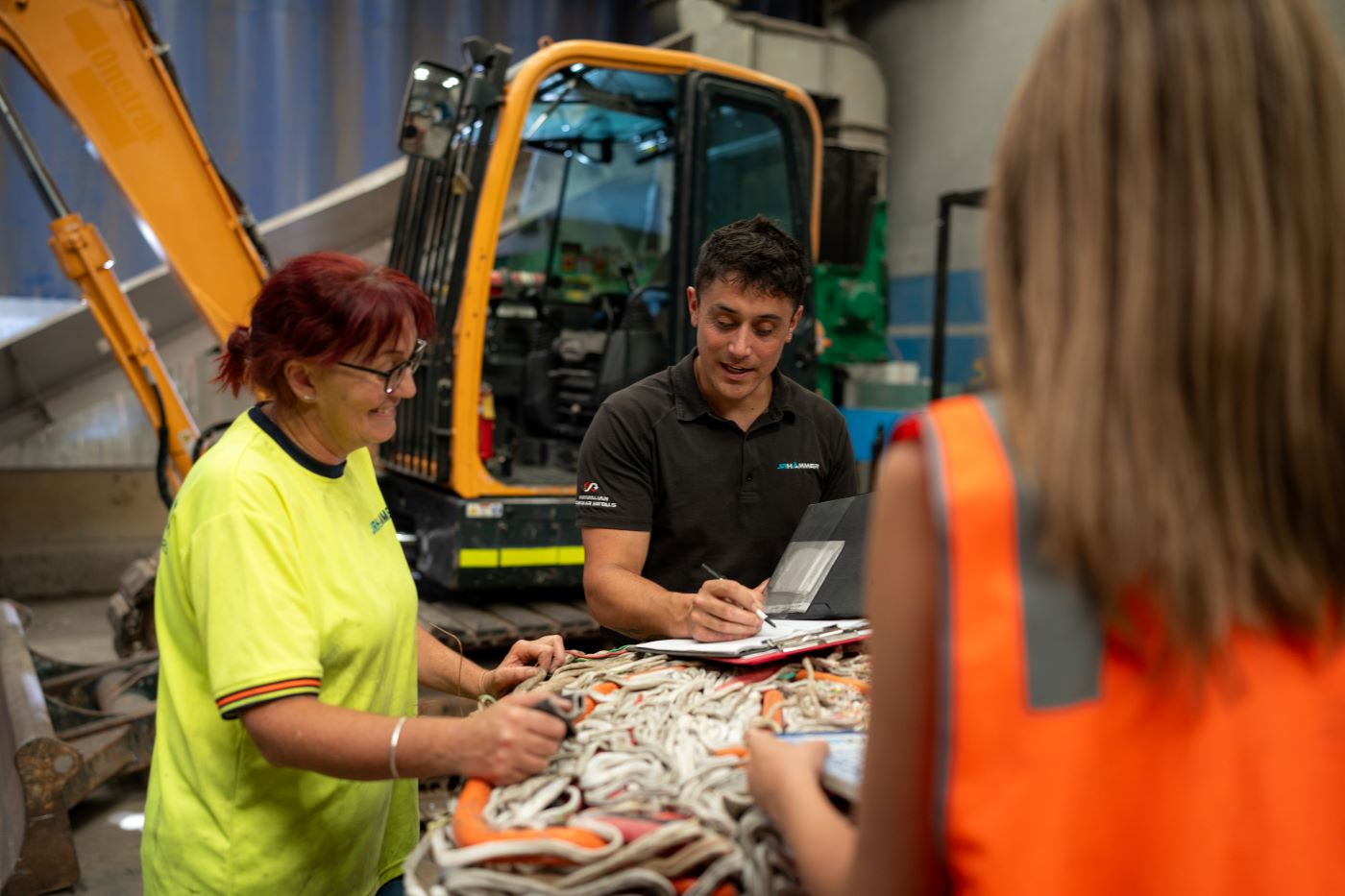The Knowledge Gap: What Happens When Trades Don’t Know What’s Recyclable

An apprentice tradie strips out old cables on a job site. The whole cables go straight into the cable bin, set aside for the scrap yard – that much they know has value. But the PVC conduit gets tossed into general waste bins, possibly bound for landfill. What they don’t know is that when those cables reach the scrap yard, only the metals get recovered – the PVC sheathing around each cable gets stripped off and discarded. Meanwhile, that same PVC material could be processed back into reusable material through advanced recycling technology.
This happens on Australian building sites every day, and it isn’t because the recycling technology isn’t there, but because trade training doesn’t teach practical waste separation. While CSIRO and government reports urge a pivot to circular skills, most apprentices finish their qualifications without learning what happens to materials at end-of-life, particularly the valuable resources hiding in what looks like waste.
Germany shows another way. Its dual education system combines real work with structured schooling and even offers a 3-year trade qualification for recycling and waste management. If Australia wants to meet its resource-recovery ambitions, these recycling skills can’t stay optional, they must be core.
What Aussie tradies aren’t taught about recycling
The gap between sustainability principles and practical skills is stark in Australian trade training. While apprentices learn general environmental awareness, they graduate without knowing how to identify recyclable materials.
Recycling skills remain largely optional rather than core competencies. Units like CPCCBC4021 (Minimise Waste on the Building and Construction Site) exist but sit outside most core trade pathways. This creates a particular blind spot, electrical apprentices learn to install PVC conduit and pull copper cables expertly but rarely discover that both materials can be recovered through advanced processing technology.
It signals that these skills aren’t prioritised through TAFE education. Victoria’s clean economy prospectus acknowledges the value loss when materials hit landfill but doesn’t mandate these capabilities across all trades, while TAFE NSW positions “Environment & Sustainability” as non-core. This gap is compounded by some TAFE instructors lacking training in circular economics and recycling practices, creating a knowledge gap that flows from the classroom to worksite.
Regional research identifies “lack of knowledge across industry” as a top barrier to construction and demolition recycling. Compounding the problem further is the persistent trade shortages affecting around 50% of roles as employers struggle to find qualified candidates, yet there’s still no systematic addition of job-ready circular skills to core training programs.
Why this knowledge gap is costing us big
Australia’s ambitious 80% resource recovery goal by 2030 requires workforce capabilities in separation, quality control, and market-ready recycled materials. Skills that mainstream training doesn’t currently develop.
While traditional cable recyclers achieve around 50% material recovery, JR Hammer consistently hits at least 90% recovery rates through their advanced processing technology and separation expertise. The difference comes down to their deep understanding of what to separate and when.
PVC provides a telling example. Widely used in electrical work for conduit and cable sheathing, it shows the lowest recovery rates in Australia (just 3-5% annually). JR Hammer’s collaboration with CSIRO and RMIT on PVC recovery shows what’s achievable when cutting-edge technology handles contaminated materials and feedstock, highlighting why separation knowledge matters.
As Josh from JR Hammer explains: “We regularly process materials that contractors didn’t even realise were recyclable. The difference between sending 50% or 90% of materials back into the circular economy often comes down to basic separation knowledge that should be second nature to every tradesperson.”
Industry stewardship programs exist but still need skills. JR Hammer’s RecyCable program connects major electrical wholesalers like Lecky’s and Middy’s with advanced recycling technologies, yet uptake depends heavily on contractor knowledge on recycling, what materials qualify and awareness of the process.
Germany’s model (when waste knowledge is built in)
Germany’s waste management is fully integrated into how tradies think about materials from day one. The dual apprenticeship system combines workplace learning with structured vocational education, with apprentices working for companies while attending vocational school 1-2 days weekly.
Germany also has a state-recognised 3-year qualifications covering waste acceptance, classification, separation, plant operation, and quality assurance. This treats resource recovery as skilled work, not unskilled cleanup for anyone.
The dual structure and standardised learning mean construction apprentices (electricians, carpenters, plumbers) routinely learn material recovery as part of workplace training, not as an optional add-on. When waste separation is built into the apprenticeship structure, it becomes second nature rather than an additional burden.
How Australia can catch up
The solution doesn’t require rebuilding our entire training system but a strategic integration of practical recycling skills into existing frameworks.
Elevating units like CPCCBC4021 from elective to mandatory across construction trades, with assessed on-site separation tasks for materials like PVC, copper, and aluminium, would create baseline competency quickly.
JR Hammer’s RecyCable program already connects electrical contractors through major wholesalers like Lecky’s and Middy’s, providing an established network that educates contractors about cable recycling opportunities while delivering an easy, effective way to turn waste into compounding financial and environmental returns.
Building on existing state clean-economy initiatives through TAFE partnerships would also create delivery pathways without requiring entirely new programs.
If Germany can make resource recovery a trade, Australia can make it a trade skill. We have the technology and are already proving 90% recovery is achievable. Now we need the workforce skills to match. It’s time to make resource recovery as fundamental to trade training as safety protocols.
Explore more stories on our blog:


